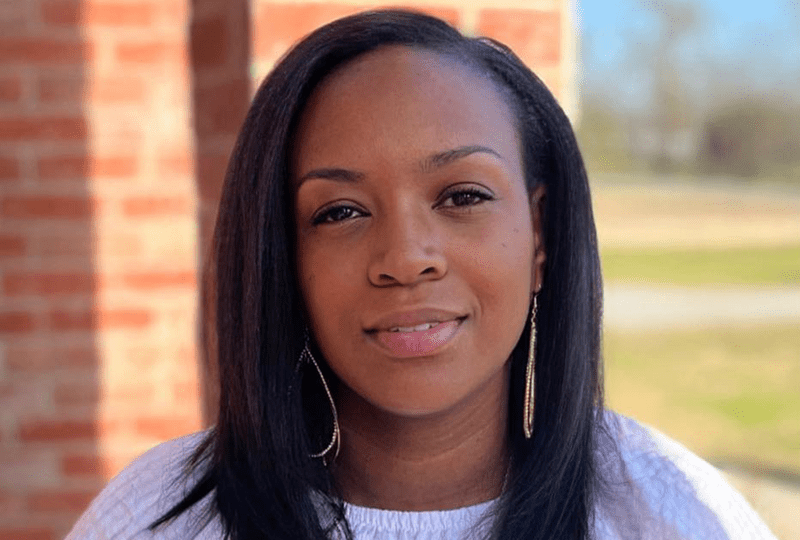Perspectives: Letora Anderson

March 21, 2023
Letora Anderson, PLA, AICP, is a landscape architect and urban planner with a background in sustainable design, park master planning, comprehensive planning, and community development. As an assistant professor in the landscape architecture program at the University of Texas at Arlington, her research focuses on planning and design approaches that foster cultural landscapes, environmental reconnection, equitable engagement, and community development in minority neighborhoods.
What drew you to landscape architecture?
Growing up, I was initially interested in pursuing a degree in architecture. However, I joined the Army National Guard during my sophomore year of high school, which required me to attend Basic Training upon graduation. When I returned home, I discovered that I had missed the deadline to submit my portfolio for admission to the architecture program.
Although I was disappointed, I remembered seeing the landscape architecture program in the course catalog earlier that year. Therefore, I enrolled in an Introduction to Landscape Architecture course since it was a related field. The course was taught by Professor Max Conrad and consisted of a series of presentations from landscape architects working in various sectors of the profession. The exposure to the vast array of project scales, sectors, and environmental applications drew me to the profession. I became interested in how I could play a part in solving the complex environmental issues I was learning about in my coursework.
What is driving you professionally right now?
Last year, I transitioned from teaching part-time as an adjunct professor to full-time as an assistant professor. My goal as an educator is to provide a practical understanding of design processes, emphasize collaboration, orchestrate the exploration of complex environmental and social systems, and cultivate students' interests, talents, and unique experiences that can be applied in professional practice. I form environments that challenge perspectives and refine design ideals in each course. Through continual observation, my teaching style adapts and evolves to suit the progressive intellectual needs of students. This integrative teaching paedology influences my instructional decisions and methodologies, which in turn affects how I interact with students and the types of activities used to engage them.
Effective teaching is relational and dependent on the student-faculty dynamic, which requires a commitment on both ends. As a professor, I provide a framework for insight, exploration, and self-discovery within the program. My role demands a passion for the profession and a commitment to the advancement of my students.
What challenge is landscape architecture allowing you to address right now?
My current research is centered on community development practices and sustainable landscape design solutions that reverse the effects of disinvestment in underserved communities. My interest in counteracting this phenomenon stems from personal experience as I witnessed my old neighborhood decline over the years, which was the area where my mom grew up in north Baton Rouge, Louisiana, called Gus Young, a predominantly African American community. The area was named after civil rights leader Gustav Young, the first African American to register to vote in Baton Rouge. He led voter registration drives and advocated for infrastructure improvements in Black communities. However, if you were to look at the Gus Young community today, it has experienced disinvestment and is in the very condition that Gustav Young advocated against.
I believe time tells a story. As designers, we must understand the timeline of a place because disinvested areas have historical implications stemming from a lack of public investments and minimal capital improvements for infrastructure and community services over an extended period. In addition, this occurrence disproportionately affects minority neighborhoods. Therefore, I pursue projects that advance environmental equity through design, infrastructure improvements, and increased access to resources while protecting existing residents.
What challenge would you give emerging leaders?
In recent years, there has been an increased focus on social justice issues and a call to action to address racial inequalities. The role of landscape architects now spans beyond design to community activism through advocacy and applied research that addresses environmental justice issues. I would challenge emerging leaders to understand the implications of implicit bias issues within the profession and reflect on personal perspectives that may affect their design approach. The best way to test our bias is to ensure the profession is diverse. Seek diversity in your community, cohort, and colleagues. Work with someone different from you. Most importantly, seek partners and team members that reflect the community you aim to aid.
Where do you think the profession needs to go from here?
Academia has a great impact on the profession. We are helping to shape future landscape architects. Therefore, we should seek to address diversity within the academic environment, course materials, and professional practice. We must prepare students to work with diverse teams, ideals, cultures, and individuals. This preparation requires a diverse cohort through recruitment efforts that seek to retain a diverse student body. It also involves instruction that integrates diverse perspectives into teaching by referencing diverse scholars, theorists, and practitioners representing a wide cross-section of cultures and racial backgrounds. This needs to increase in our current academic environment. There's a link between the percentage of black and brown practitioners in academia and the disparity represented in the profession.
LAF's Perspectives interview series showcases landscape architects from diverse backgrounds discussing how they came to the profession and where they see it heading. Any opinions expressed in this interview belong solely to the author. Their inclusion in this article does not reflect endorsement by LAF.











